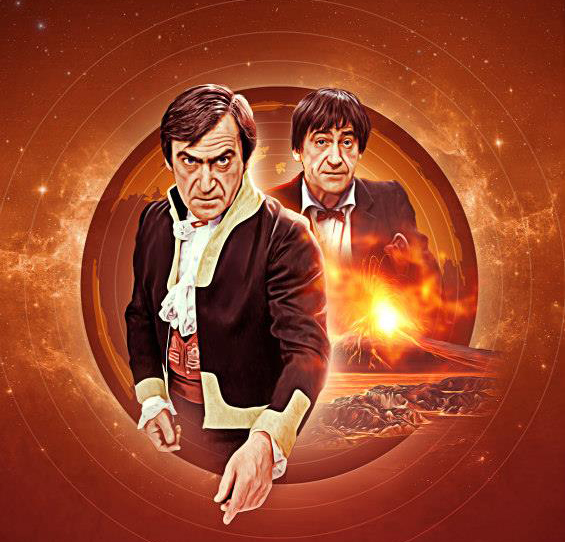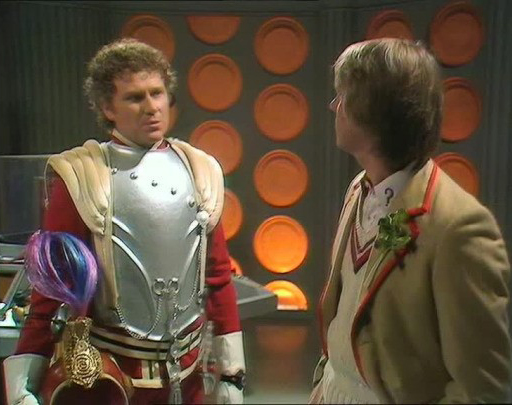Since 1966, clones of the famous Time Lord have been mysteriously appearing in Doctor Who stories. What is the explanation for their uncanny resemblance to the Doctor?

You may think that the presence of ‘clones’ in Doctor Who stories is just a by-product of casting. As in, sometimes an actor is given a part in Doctor Who and then years later they end up becoming the Doctor.
Well, this is partly true. For example, one of the Doctor’s clones was the slightly villainous Time Lord Commander Maxil from the 1983 story ‘Arc of Infinity.’ He was played by Colin Baker who, less than two years later, would be cast as Peter Davison’s replacement. There was no grand plan here, and in hindsight, Maxil’s role is an ironic one; at one point, he gets to shoot the Fifth Doctor!

And a similar situation occurred in one of the later Doctor Who stories. The actor Peter Capaldi was cast as Caecilius in 2008’s ‘The Fires of Pompeii,’ as well as the civil servant John Frobisher in Torchwood: Children of Earth (a Doctor Who spin-off.) And then, in 2013, Peter Capaldi was announced as the Twelfth Doctor, and made his first appearance in the show’s 50th anniversary special.
But in Peter Capaldi’s case, the production team chose to address the fact that the Twelfth Doctor’s face bore a striking resemblance to a character that the Doctor had previously met. Indeed, a number of subtle hints were made in Capaldi’s Doctor Who stories; in ‘Deep Breath,’ when the newly-regenerated Doctor sees his face for the first time, he seems to recognise it, and wonders if it was ‘given’ to him. “Who frowned me this face?” he asks. “It’s like I’m trying to tell myself something…”
This point is picked up in one of the later Doctor Who stories ‘The Girl Who Died,’ when the Doctor realises that he was responsible for taking Caecilius’ face. “I know where I got this face,” he says. “I know what it’s for. [It’s] to remind me. To hold me to the mark. I’m the Doctor, and I save people.” The speech is intercut with shots of the Tenth Doctor saving Caecilius from the eruption of Mount Vesuvius.
The Doctor’s intention, therefore, was to wear the face of someone he had previously saved, to give him the strength to live up to his name. Which makes a lot of sense. And we know that Time Lords can influence how they are going to look; Romana did this when she regenerated into a copy of Princess Astra.
But the Twelfth Doctor’s theory doesn’t make sense in the case of Commander Maxil, who he certainly did not save. And it doesn’t add up in the other Doctor Who stories, either.
For instance, in the 1966 story ‘The Massacre,’ the Doctor never actually meets his clone, as far as we know. In the adventure, the Doctor’s double is the evil Abbot of Amboise, who is at the centre of a conspiracy to wipe out the Huguenots in 16th century France. He appears to have no knowledge of the Doctor, nor the Doctor of him, and the Abbot is ultimately assassinated. Moreover, he is not exactly the nicest of characters, and the Doctor certainly does not save him.
Other Doctor Who stories continue this trend. In ‘The Enemy of the World,’ the Doctor again encounters a villainous doppelgänger, this time in the form of Ramón Salamander – a power-mad individual who is hell bent on world domination. And as with ‘The Massacre,’ no explanation is given as to why Salamander looks like the Doctor – but this time, the two characters do meet, and in fact they have a punch-up in the TARDIS! At the story’s conclusion, Salamander attempts to steal the Doctor’s machine and ends up ejecting himself into space.
And that, really, is the last we hear of the matter. Moreover, the Doctor doesn’t seem too bothered about the fact that there was another individual walking around with his face.
So what are we to make of all this, and do any of the other Doctor Who stories offer clues as to what could be going on?
Well, as mentioned previously, it has been established in Doctor Who canon that Time Lords can choose their own faces; this is further demonstrated in ‘The War Games,’ where the Doctor is given a range of new faces to choose from. Could it be that, for some reason, the First, Second and Sixth Doctors consciously chose to copy the appearance of villainous people? Did the Doctor already know about the Abbot of Amboise and Ramón Salamander?
Or could these people be future incarnations of the Doctor? We know from Doctor Who stories such as ‘The Day of the Doctor’ that the Time Lord will revisit some of his favourite faces in the future, as proven by the fact that one his future incarnations copied the face of the Fourth Doctor.
But overall, this theory seems unlikely given that the Abbot and Salamander seemingly die without regenerating – and that they were evil! Although we have encountered evil versions of the Doctor before; the Valeyard, for example, was revealed to be one of the Doctor’s darker, future incarnations who existed between his Twelfth and Thirteenth bodies. So the Doctor certainly has an evil side.
The bottom line is: we don’t know. And with Doctor Who stories like ‘The Timeless Children‘ bringing the Doctor’s body count, regenerative abilities and personal history into question, anything is possible.
So why do you think the universe is littered with so many clones of the famous Time Lord? And what is your favourite theory? Let me know in the comments below.

Doctor Who tie – order now from the Lovarzi shop!


Also villains tried to mimic the Doctor like in ‘The Android Invasion’, ‘Meglos’ and ‘Arc of Infinity’.
Ah yes, good point!